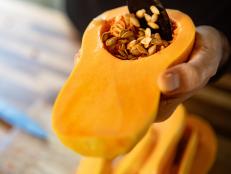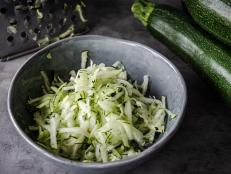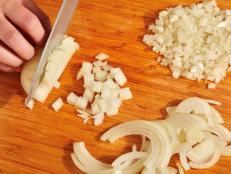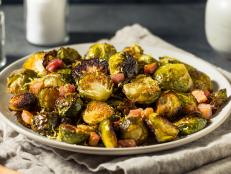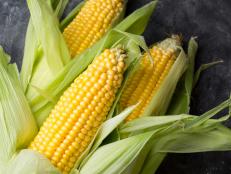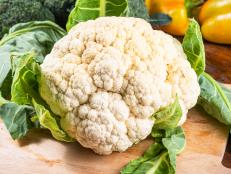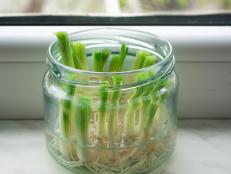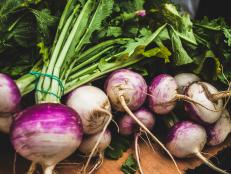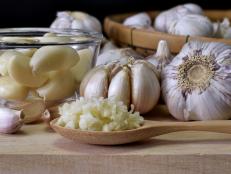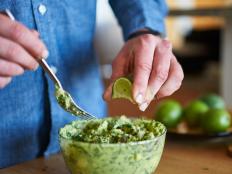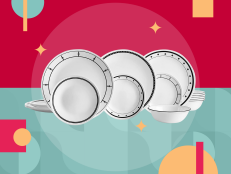What Is Hubbard Squash? And How to Cook It
Inside the bumpy, thick skin there's a surprise.

jatrax/Getty Images
By Fraya Berg for Food Network Kitchen
Fraya is a chef and a contributing writer at Food Network.
If you go to a farmers’ market or a farm stand to get pumpkins or decorative gourds, you’re going to see all the fancy squashes that are for sale. The little lacquered gourds are just for table decorations, but all the bigger squashes are edible. Hubbard squash has a skin that is tough and bumpy, but with our tricks, you'll be enjoying its tasty, sweet flesh in no time.
What Is Hubbard Squash?
Hubbard squash is a large winter squash, typically about 1 foot wide and 15 to 20 pounds in weight. It has very bumpy skin that comes in different colors: dark green, pale blue-green, orange or yellow. Inside, the flesh ranges from yellow to orange, like most winter squash.
Named for one of the first farmers to grow the squash in the United States, Hubbard squash originally came from the Caribbean islands. It's a great source of vitamin A, iron and riboflavin.
Cooked Hubbard squash can be used in most recipes that call for other varieties of winter squash.

Pinkybird/Getty Images
What Does Hubbard Squash Taste Like?
Hubbard squash has the sweet flavor you expect from orange-fleshed winter squashes. The texture can be a bit grainy, which is why most recipes you see are for purees and soups. Butter, brown sugar and a bit of salt bring out its best flavor.
How to Buy and Store Hubbard Squash
Hubbard squash is available September to March, typically at farm stands and farmers markets where they are sold whole. They are often sold cut in quarters at supermarkets. When buying, be sure to choose squash that don’t have soft spots or mold on the skin.
Whole squash can be stored around 50 degrees F. or in a refrigerator for 5 to 6 months. The fridge makes sense if you have an extra one in the basement or garage - keep in mind that Hubbard squash will take up a fair bit of space. While being stored, the flavors of Hubbard squash concentrate and intensify rather than deteriorate.
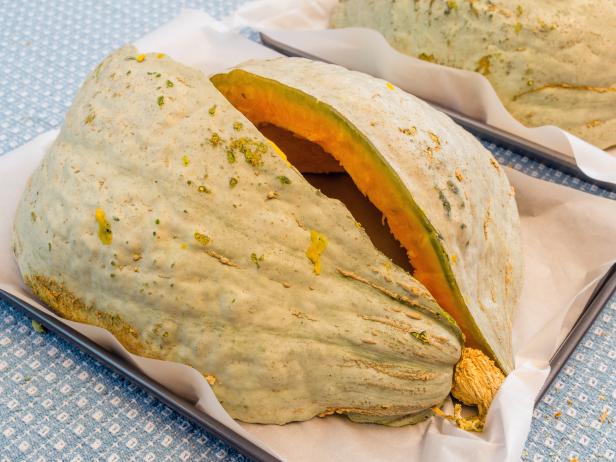
jatrax/Getty Images
How to Cook Hubbard Squash
Other than a turkey or a whole ham, there are few things you’ll cook as big as a whole Hubbard squash. So how do you manage a 20-pound squash? There are a few ways to go about it, starting with the easiest: roasting a whole squash. You can also roast chunks or slices. And you can simmer diced Hubbard squash in water or stock.
How to Bake a Whole Hubbard Squash
The absolute easiest way to cook a whole Hubbard squash is to bake it whole (because of its bumpy skin and large size, peeling or cutting this squash is difficult). Just follow these easy steps:
- Heat the oven to 400 degrees F.
- Using a paring knife, pierce the squash 10 times on the top and sides to prevent the squash from exploding when steam builds up inside.
- Place the squash on a sheet pan or turkey roasting pan: As the squash cooks, liquid will seep out and you want a pan to catch those juices.
- Test for doneness with a fork, it’s ready when it’s soft, about 1 hour.
- Carefully cut the squash in half and scoop out the seeds. We save the seeds and roast them like pumpkin seeds.
- Scoop the cooked squash out of the skin and serve as a side dish or use the cooked squash to make Hubbard squash soup.
How to Roast Hubbard Squash Slices
When you want caramelized chunks of Hubbard squash, you’ll have to cut it and peel it before roasting. Cutting a Hubbard squash is not only difficult, but also, it’s dangerous. You would need a knife the size of a machete, the strength of a weightlifter and some magic to give it a flat side so it won’t roll around while you’re trying to cut it. The easiest way to open a Hubbard squash is to let the squash do the work for you. Place the Hubbard squash in a bag (or place a towel on the ground) and raise the squash over your head. Drop the squash on the towel on a hard surface, and it'll crack open. Then follow these directions for roasting. You can use the roasted squash to make soup or in any dish calling for roast squash.
- Heat oven to 375 degrees F.
- Line 2 sheet pans with parchment paper.
- Crack open the Hubbard squash.
- Scoop out the seeds and set them aside for roasting later.
- Microwave the halves for 1 minute to soften them. Slice each half into smaller wedges with a chef's knife.
- Brush the wedges with olive oil and season with salt and pepper. Some maple syrup and warm spices are a nice addition too.
- Roast the squash until it's caramelized and tender when pierced with a fork, 35 to 50 minutes.
How to Cook Hubbard Squash on the Stove
To cook Hubbard squash on the stove, you'll first need to crack it open, peel it and dice it. Then start the pieces in a pot of cold water and simmer them until they're cooked.
- Drop the Hubbard squash to break it open (see the section on roasting Hubbard squash slices for more info).
- Working with one piece at a time, scoop out the seeds and save them for roasting later.
- Microwave the halves for 2 minutes to soften them. Slice each half into smaller wedges with a chef's knife.
- Remove the skin from each wedge with a paring knife. Dice the flesh into evenly sized squares.
- Place the squash pieces in cold salted water; bring the water to a boil. Reduce the heat to a simmer.
- Cook until the squash is tender when pierced with a fork, about 15 minutes. Drain.
Hubbard Squash Substitute
Any of the winter squash can stand in for Hubbard in a recipe and vice versa. If you have a hubbard squash, feel free to turn to butternut squash and acorn squash recipes for inspiration.
Winter Squash Recipes Where You Can Sub In Hubbard Squash
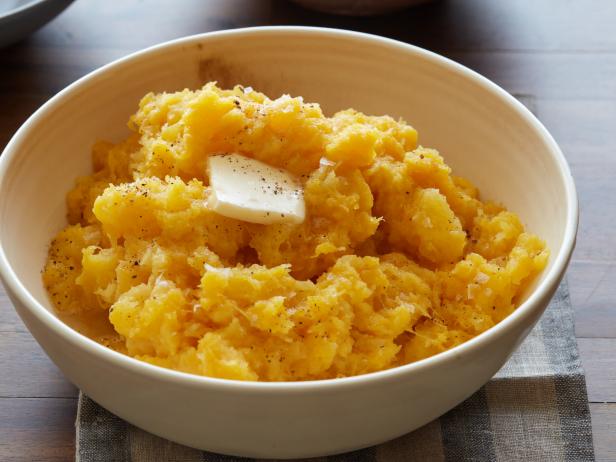
Matt Armendariz
Sometimes the simplest recipes are the best: roasting the Hubbard squash whole and then following this recipe will give you a great side, perfect for pork, chicken or beef mains.

RYAN DAUSCH
Panzanella sounds so much better than stale bread salad, but that’s what it really is. Toasting the bread makes it “stale”, then it’s mixed with roasted squash, salami and fennel.

These tamales are vegan and gluten-free. The masa for these tamales is made with water and squash that’s cooked on the stove. More chunks of squash are stirred into the filling.

Justin Walker
If you’re making this soup, use the whole roasted Hubbard squash method and proceed from there.
Here, you'll simmer cinnamon, cloves and garlic in evaporated milk to infuse it with warm flavors. Strain it, then puree it with squash for aromatic results.
Related Links:






















